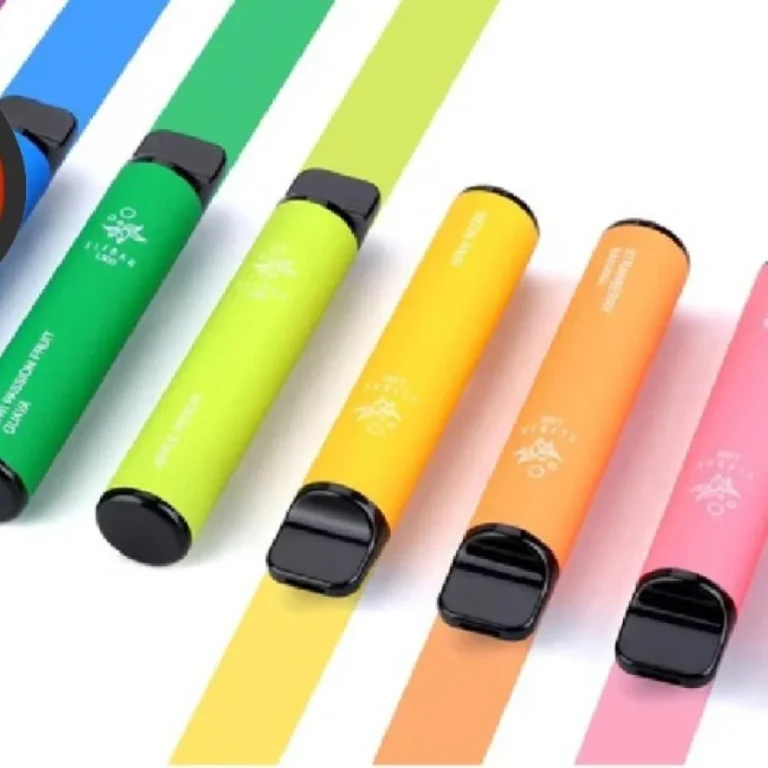Benefits of Pet Interactive Toys: Enhancing Playtime and Bonding with Your Furry Friends
Interactive toys play a key role in enhancing your pet’s life. They offer several benefits that cater to both mental and physical health. By keeping your pet engaged and active, these toys help manage weight and prevent boredom.
Enhancing Mental Stimulation
Interactive toys can challenge your pet’s mind. Toys that require problem-solving encourage your dog or cat to think creatively. This mental workout can reduce anxiety and keep them sharp.
For example, toys that hide treats or require manipulation to dispense food tap into your pet’s natural instincts. They spend time figuring out how to get the reward, which keeps their brains active.
More engaged pets tend to be happier. A mentally stimulated pet is less likely to exhibit destructive behaviors due to boredom.
Promoting Physical Activity
Physical activity is crucial for your pet’s overall health. Interactive toys often motivate your pet to run, jump, or play.
For instance, toys that bounce or roll can encourage your dog to chase, promoting exercise. Regular activity helps strengthen muscles and improves cardiovascular health.
Cats benefit too! Feather wands or laser toys can engage your feline friend in playful stalking and chasing. This type of play keeps them agile and fit.
Active pets are usually happier and less stressed. Plus, engaging in playtime with your pet can strengthen your bond.
Supporting Healthy Weight
Keeping your pet at a healthy weight is important. Interactive toys can assist in weight management by encouraging exercise and playful movement.
When your pet engages with toys, they burn calories. This is particularly important for pets prone to weight gain.
Make sure to choose toys that appeal to your pet’s size and activity level. This ensures they remain challenged and active without feeling overwhelmed.
Establishing a routine with interactive play can lead to a healthier, happier pet. By helping your pet stay fit, you can reduce the risk of health issues related to obesity.
Reducing Problem Behaviors With Interactive Play
Interactive play can significantly help your pet by reducing negative behaviors. Engaging your dog or cat in fun activities keeps them busy and satisfied. This can lower the chances of them acting out due to boredom or anxiety.
Minimizing Destructive Behavior
Destructive behaviors, like chewing on furniture or excessive barking, often stem from boredom or excess energy. By providing interactive toys, you can channel this energy into something positive.
Consider toys that encourage mental stimulation, such as puzzle feeders or toys that require your pet to solve a challenge. These toys keep their minds occupied and help to prevent boredom.
You might also want to schedule regular playtime sessions. This keeps your furry friend engaged and less likely to find trouble. Playtime is essential for their happiness and well-being.
Easing Separation Anxiety
Many pets feel anxious when left alone. This can lead to behaviors like digging, scratching, or excessive barking. Interactive toys can help make this time easier for both you and your pet.
When you provide engaging toys, your pet focuses on play rather than worrying about your absence. Opt for toys that can be stuffed with treats to keep them busy longer.
Additionally, consider leaving a favorite toy or a puzzle to encourage problem-solving during your absence. This can help ease their anxiety and make them feel more secure. Remember, a happy pet is less likely to show signs of distress.
Developing Essential Skills Through Play
Interactive toys can help your pet develop important skills while having fun. These toys promote problem-solving and tap into their natural instincts, especially for cats and dogs. Engaging your pet in play is a smart way to keep them mentally and physically active.
Encouraging Problem-Solving Skills
Interactive games challenge your pet’s brain. Toys that require your pet to figure out how to get treats can improve their problem-solving abilities. For example:
- Puzzle Toys: These toys have compartments that hide treats. Your pet must learn how to move pieces to get to the reward.
- Hide-and-Seek Games: You can hide treats around the house. Your pet will use their nose and instincts to find them.
These activities not only stimulate their mind but also increase their confidence. The process of thinking creatively helps them stay engaged and happy, which is vital for their emotional well-being.
Boosting Natural Hunting Instincts
Pets have natural hunting instincts that can be brought to life through play. Using toys that mimic prey can excite these instincts and provide much-needed exercise.
- Wand Toys for Cats: These toys allow your cat to stalk and pounce, simulating real hunting scenarios.
- Fetch Toys for Dogs: Throwing balls or toys allows your dog to chase and retrieve, tapping into their instinct to hunt.
Engaging in these activities helps maintain a healthy weight and keeps your pet active. By boosting these natural instincts, you also strengthen your bond through positive interactions.
Types of Pet Interactive Toys
There are various kinds of interactive toys designed for pets. Each type serves a unique purpose and can enhance your pet’s experience. These toys provide mental stimulation and physical exercise, keeping your furry friend engaged and happy.
Puzzle Toys
Puzzle toys challenge your pet’s mind. They often come in different shapes and sizes. These toys require your pet to figure out how to get a treat or a toy hidden inside.
You might find toys with sliding pieces or compartments that open in certain ways. These challenges can keep your dog or cat entertained for a long time. Puzzle toys can help reduce boredom and prevent destructive behaviors.
They also promote problem-solving skills. You can choose from simple puzzles for beginners or more complex ones for experienced pets. Make sure to supervise your pet while they play to ensure they don’t chew or swallow pieces.
Treat Dispensers
Treat dispensers combine fun with rewards. These toys release treats as your pet plays with them. This can keep your furry companion moving and motivated.
Some popular designs include balls and tunnels that can roll or wobble. Your dog or cat must move the toy around to access the treats inside. This type of toy encourages physical activity and can help with weight management.
You might also want to look for adjustable treat dispensers. They allow you to change the difficulty level as your pet gets better at playing. Consider using healthy treats inside to maintain your pet’s diet.
Chew Toys
Chew toys are perfect for pets who love to gnaw. These toys come in various textures and materials. They are designed to satisfy your pet’s natural urge to chew.
Many chew toys also promote dental health. Some brands have grooves or ridges that help clean teeth and freshen breath while your pet chews. Choosing a durable chew toy is important, especially for aggressive chewers.
Always check for safety by examining the material. If it breaks easily, it could pose a choking hazard. Regularly replacing worn-out chew toys can keep your pet safe and happy.
Ball Launchers
Ball launchers add fun to fetch games. These toys can launch balls far distances with little effort from you. They encourage your dog to run, retrieve, and get some exercise.
Automatic ball launchers are battery-operated and can launch balls repeatedly. This allows your pet to enjoy fetch even when you’re not available to throw. Manual launchers help you throw further with less stress on your arm.
Balls made for launchers are often softer and safe for your pet’s teeth. Using a launcher can also help your pet develop better coordination and agility. Make sure to supervise playtime to ensure your pet plays safely.
Enriching Playtime With Special Toy Options
Engaging your pet in playtime is vital for their mental and physical health. Special toys can provide stimulating experiences that keep your furry friend entertained and happy. Let’s explore some of the best options available.
Snuffle Mats
Snuffle mats are excellent for encouraging your dog to use their nose and search for hidden treats. These mats have many fabric folds where you can hide kibble or small treats. Your pet will enjoy sniffing around to find them.
Using a snuffle mat can also slow down fast eaters. Instead of gulping down food, your dog can take their time exploring and enjoying their meal. Plus, it provides mental stimulation, which can reduce boredom and anxiety.
Tug Toys
Tug toys create an exciting way for your dog to engage in play with you. They can be made from various materials, such as rope or rubber. Playing tug-of-war can strengthen your bond and also let your dog expend energy.
A good tug toy is durable and won’t break easily. Look for options that are safe and non-toxic. Remember to let your dog win sometimes to keep them motivated and excited during the game.
Fetch Toys
Fetch toys are a classic choice for active dogs who love to chase. Balls, frisbees, and specialized fetch sticks can keep your dog running and jumping. This type of play helps keep your dog’s body fit as they exercise.
When choosing fetch toys, consider their size and materials. Make sure they are soft enough to avoid hurting your dog’s mouth. These toys are great for exercises in the yard or a park, promoting fun time outdoors.
Squeaky Toys
Squeaky toys are popular among dogs for the fun sounds they make. These toys come in various shapes, sizes, and textures, keeping your dog interested. The squeak encourages dogs to engage more during play.
These toys can also be great for solo playtime, offering entertainment when you’re busy. They can be found with added features like crinkle sounds or different textures to keep your dog’s attention longer. Just make sure to supervise use to avoid accidental swallowing of parts.
also read: Common Issues in the Sprinkler Systems Needing Professional Repairs







